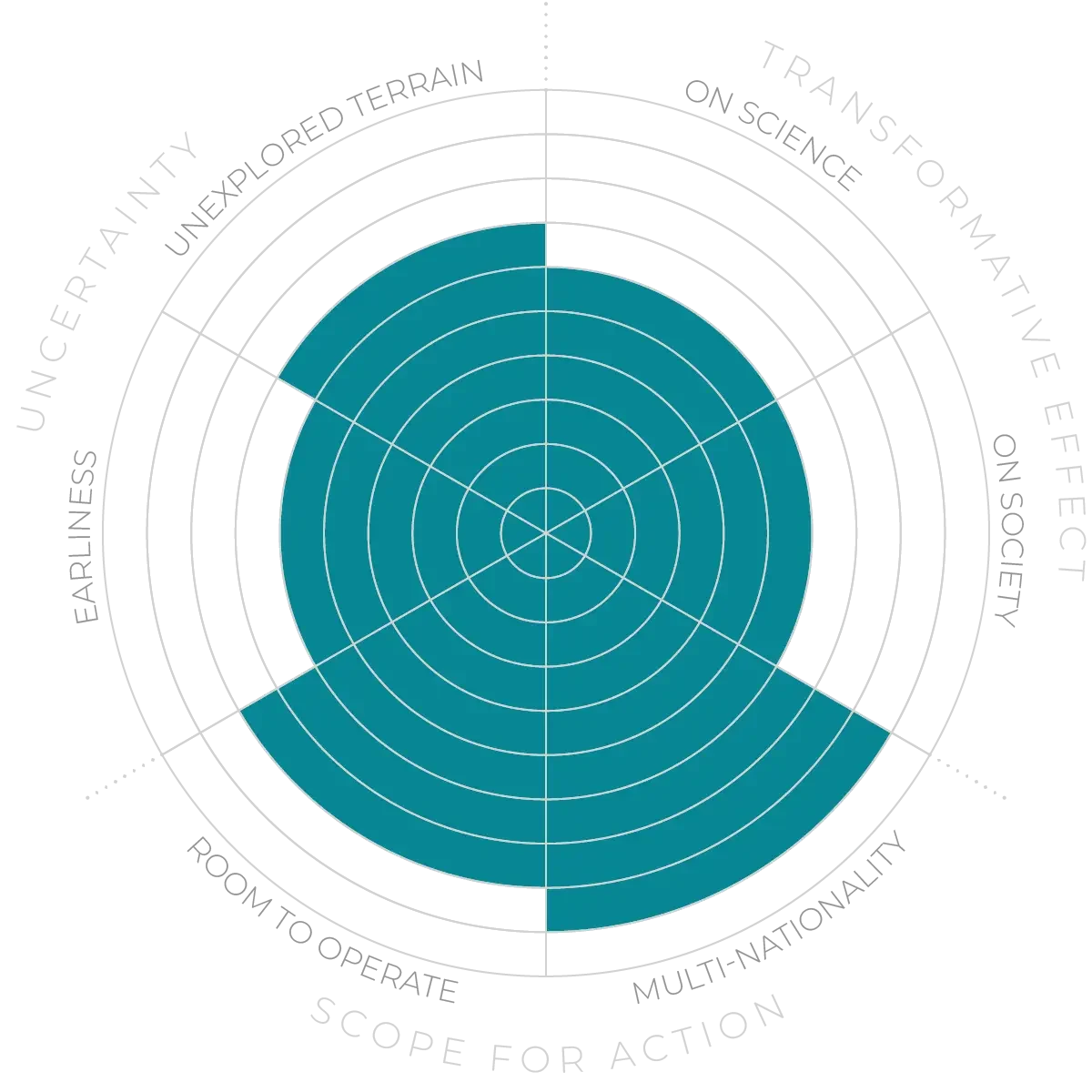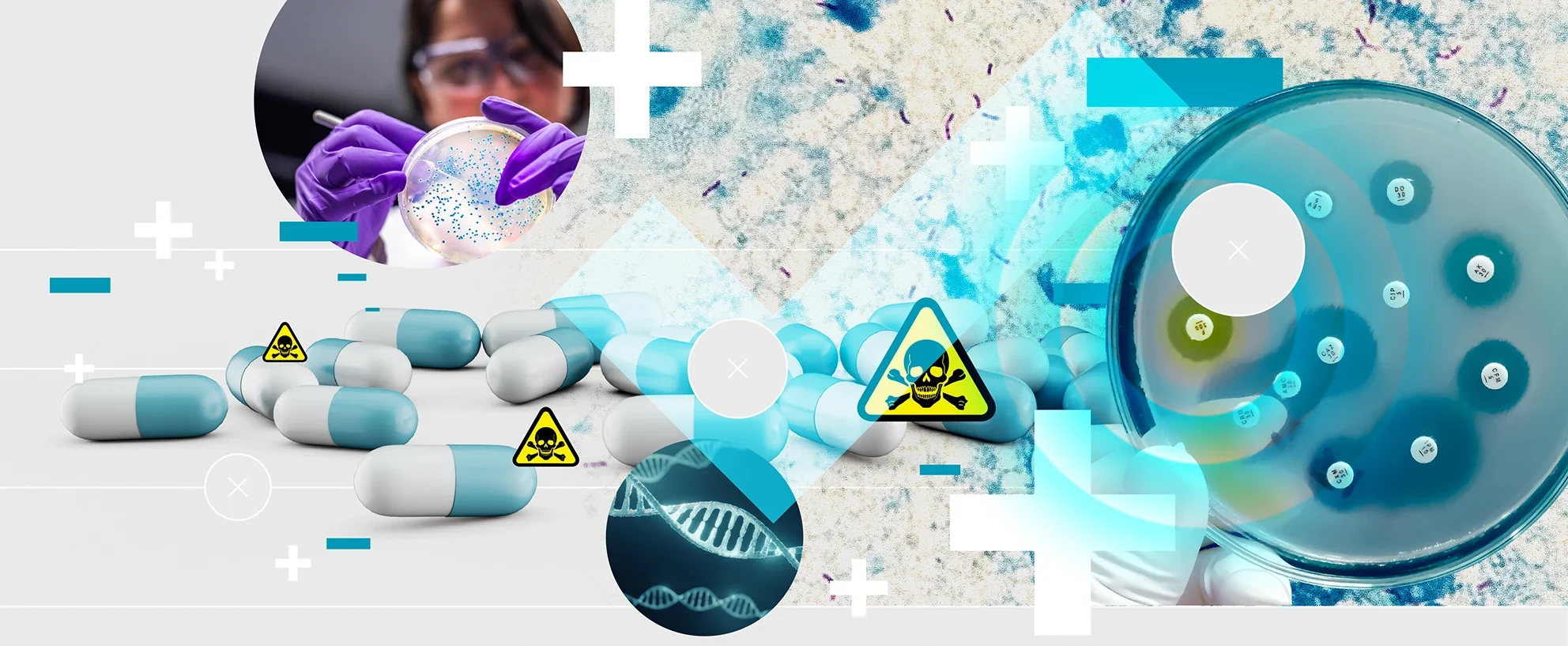The widespread use of antibiotics, antivirals and antifungals has driven the evolution of antimicrobial resistance, set to kill 10 million people a year by 2050. Besides antimicrobial resistance, other challenges to combating infectious diseases include, for example, those of tuberculosis, which has immune tolerance that makes it extremely hard to target with a single strategy,23 and the chronic fungal infections that immunosuppressed patients often develop.24 But new drugs are hard to discover and develop, as they do not make much money competing against cheap generics, such as current antibiotics on the market.
Future Horizons:
10-yearhorizon
More therapies to choose from
25-yearhorizon
A cure for HIV
One such recent candidate, zosurabalpin, overcomes existing antibiotic resistance mechanisms in a major hospital-acquired pathogen, carbapenem-resistant Acinetobacter baumannii (CRAB), and is now in human trials. Although AI holds the promise to speed up drug-screening processes, a major challenge in developing new antibiotic medicines remains the progression of new chemotypes that kill bacteria effectively in vitro into human medicines that carry well-balanced drug-like properties, including safety profiles.
It will be necessary to embrace entirely new ideas. First, existing antibiotics may be made more effective by using them in combination with non-antibiotic drugs. The use of bacteria-infecting viruses known as phages can treat bacterial infections and reduce resistance to antibiotics by removing physiological barriers — biofilms — which contribute to resistance. However, infrastructure is under-developed for clinical trials, and research is still needed to answer important questions about the specific actions of phages against bacteria, and how bacteria develop resistance against phages.25 Regulatory infrastructure also needs to be updated for the research into phages to advance.26 Research is also under way to develop microbiome strategies to cultivate gut flora to outcompete pathogenic strains. In addition to faecal transplants, more sophisticated RNA-based sculpting of the microbiome can selectively kill certain bacteria.27 Immunotherapy is also being investigated for deployment against bacterial infections28 and fungus.29 The more alternatives to defeating antimicrobial resistance the better, to minimise the chance of pathogens evolving mechanisms to evade the treatment — that is, resistance.
Anti-infectives - Anticipation Scores
The Anticipation Potential of a research field is determined by the capacity for impactful action in the present, considering possible future transformative breakthroughs in a field over a 25-year outlook. A field with a high Anticipation Potential, therefore, combines the potential range of future transformative possibilities engendered by a research area with a wide field of opportunities for action in the present. We asked researchers in the field to anticipate:
- The uncertainty related to future science breakthroughs in the field
- The transformative effect anticipated breakthroughs may have on research and society
- The scope for action in the present in relation to anticipated breakthroughs.
This chart represents a summary of their responses to each of these elements, which when combined, provide the Anticipation Potential for the topic. See methodology for more information.



